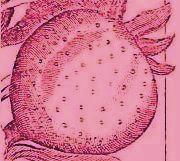          
My Favourite artists
part 2
'Tin Toys
that Never Were'
an introduction to and interview
of
Lewis
P. Morley
 Lewis' art is so enjoyable, it
is looked down on by some types who call art 'work'—and work
that stuff often is (for
the viewers, if not for the makers of it.) Most
likely, you haven't seen his art, but you've probably seen his
work.
He was born in London. They say if you can remember the ‘60’s
then you weren’t really there. 'I was there, 'Lewis says, 'but
most of it was past my bedtime.' His dream was to work on sci-fi
movies, and he's fulfilled that one. He lives with
Marilyn
Pride whom he considers his soul-mate and muse.
He a
Lewis' art is so enjoyable, it
is looked down on by some types who call art 'work'—and work
that stuff often is (for
the viewers, if not for the makers of it.) Most
likely, you haven't seen his art, but you've probably seen his
work.
He was born in London. They say if you can remember the ‘60’s
then you weren’t really there. 'I was there, 'Lewis says, 'but
most of it was past my bedtime.' His dream was to work on sci-fi
movies, and he's fulfilled that one. He lives with
Marilyn
Pride whom he considers his soul-mate and muse.
He a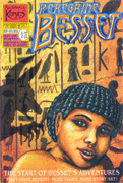 lso writes and illustrates
Peregrine Besset
—
'a mature readers' komic about a time-travelling Ancient
Egyptian dwarf'. lso writes and illustrates
Peregrine Besset
—
'a mature readers' komic about a time-travelling Ancient
Egyptian dwarf'.
'She's small, but don't call her little!'
Lewis dreams of
helping to tell the
full
story of Marilyn’s
Red
World Saga, of which Peregrine Besset is, he says, 'a small
footnote'.
Lewis P. Morley is also the creator of what he calls
'Tin toys that never were'
Not only
that, but these pictured never-were's are part of his
private collection.
The
situation demands analysis
so I cast
him on the couch and called it an
Interview

Q:
First of all, is
this a reaction to your grey and boring salaryman day job?
A:
Ok, let’s get one thing straight. Just because I work
in the film industry, doesn’t mean it’s all glamour and
glitz – at least not at the coalface I labour at. I’m much
more likely to be told to leave the room because 'George' or
'Mr.Cruise' are wanting to come in and see the work I’ve
been doing without having to deal with tradesmen. I get to
work creatively, but only on other people’s dreams. The tin
toys that never were is stuff that is all for me. I don’t
have to worry about other people’s opinions about
what I’m doing – apart from
Marilyn, whose views I respect.
 So you
work with computer projections, do you? What? Economic
forecasting?
The
computers I work with are usually piloted by other people.
My most thankless task is to be given a bit of paper and
told to 'build that'. In this age of mega-budget productions
where everything is pre-tested and presold, all the
conceptual work is done long before I’m brought on board –
the fools!
I get the idea
that you never were an economics modeller, even as a child.
What interested you as a child, if not economics?
Having grown up in the
1960s I was fascinated by toys, popular culture and '60s
Television. If it had a name, it would have to be called 'Thunderbirds'.
This
passion hasn’t died despite the fact I am now
middle-aged. During my childhood toys were changing, the
manufacturing techniques crossing over from tinplate and
slipcast rubber to injection-moulded polystyrene. The newer
toys were plastic, and despite the fact that they were
usually only one colour (as opposed to the full colour of
lithographed tin) they had more dimension and texture. I thus considered them hugely superior to the old-fashioned
tin toys.
It was only much later in life that I
began to appreciate the artistry that went into making an
object from flat metal, how flat tin can be pressed to form
objects with depth. I noticed how the flat artwork had to
compensate for the smoother, simpler shapes by being more
vibrant and often hyper-realistic in style. Tin toys are
still a bit of a mystery to me. I really don’t understand
how the tin doesn’t crinkle up like a piece of tin foil, let
alone how the pre-printed coating isn’t scraped away during
this stamping process.
Did you
have favourites?
The tin
robots of the 1960s were always my favourite. I loved how
often they had moulded plastic details to add richness and
texture to the finished item. One innovation of this period
was the introduction of fluorescent dyes, which meant that
many of my favourite childhood toys contained components
made of hot pink or lime green transparent plastic.
So what
made you warp-jump from appreciation to ‘toys that never
were’?
One day in
the mid '80s I decided to chase down some of that plastic
which was by this time being used mostly for items like ice
cream spoons. I found an ice lolly freezing mould with
interesting textures in the desired colour. This became the
basis for the details on my “Robot Rider” piece.
So you
work with computer projections, do you? What? Economic
forecasting?
The
computers I work with are usually piloted by other people.
My most thankless task is to be given a bit of paper and
told to 'build that'. In this age of mega-budget productions
where everything is pre-tested and presold, all the
conceptual work is done long before I’m brought on board –
the fools!
I get the idea
that you never were an economics modeller, even as a child.
What interested you as a child, if not economics?
Having grown up in the
1960s I was fascinated by toys, popular culture and '60s
Television. If it had a name, it would have to be called 'Thunderbirds'.
This
passion hasn’t died despite the fact I am now
middle-aged. During my childhood toys were changing, the
manufacturing techniques crossing over from tinplate and
slipcast rubber to injection-moulded polystyrene. The newer
toys were plastic, and despite the fact that they were
usually only one colour (as opposed to the full colour of
lithographed tin) they had more dimension and texture. I thus considered them hugely superior to the old-fashioned
tin toys.
It was only much later in life that I
began to appreciate the artistry that went into making an
object from flat metal, how flat tin can be pressed to form
objects with depth. I noticed how the flat artwork had to
compensate for the smoother, simpler shapes by being more
vibrant and often hyper-realistic in style. Tin toys are
still a bit of a mystery to me. I really don’t understand
how the tin doesn’t crinkle up like a piece of tin foil, let
alone how the pre-printed coating isn’t scraped away during
this stamping process.
Did you
have favourites?
The tin
robots of the 1960s were always my favourite. I loved how
often they had moulded plastic details to add richness and
texture to the finished item. One innovation of this period
was the introduction of fluorescent dyes, which meant that
many of my favourite childhood toys contained components
made of hot pink or lime green transparent plastic.
So what
made you warp-jump from appreciation to ‘toys that never
were’?
One day in
the mid '80s I decided to chase down some of that plastic
which was by this time being used mostly for items like ice
cream spoons. I found an ice lolly freezing mould with
interesting textures in the desired colour. This became the
basis for the details on my “Robot Rider” piece.
 Is
“Robot Rider” cross-timeframe?
The basic idea
is inspired by battery-operated walking toys, but this
mounted robot features a type of dinosaur that was unknown
in the popular culture of the '60s. We’d have to wait for
the movie 'Jurassic Park' before deinonychus would become a
household name amongst eight- year olds.
If it
really isn’t made of tin, what IS it made of?
The
sculpture is carved from urethane foam, coated in a smooth
coat of resin and detailed with cardboard strips to simulate
folded seams. All of the flat surfaces are made of bent
card. The bright auto-lacquer finish is inspired by a tin
clicker crocodile I bought in a charming old toy shop in
Broken Hill in the early '80s. (I have an entire nostalgic
history surrounding old-style toy shops, such as the
long-gone Heyer’s Toyland in Melbourne – but that is another
story.)
A story
that shall be continued, to be sure. For now, do you have
anything to say about 21st century toy shops?
Sadly the
toy shops of today have succumbed to the category killers: K
Mart, Big W and Target. The Mom & Pop stores like Heyer’s
and Fantasia are all gone, driven out by the new mass
economics of brand power and loss leaders. I recall working
with Marilyn on a TV ad for a new toy store called Toys-R-Us,
and Mal was helping decorate the set with creatively placed
toys when the client came in and cried 'No! That’s all
wrong! The product has to be displayed in bands of boxes .
. .' Indeed, the whole look had to be one of a wall of
product, ready to be taken down and shipped out, rather than
an indication of how nice the toys inside might be.
If tin toys
get to you as an artist, why did you spend so much time on
your tin toys that you admit 'never were', when you could
have made an installation of real ones (and if you didn’t
have a tin toy at hand, you could have just jotted down a
note and exhibited some barbed wire or a bicycle tyre or
urinal to represent tin toys; or you could have smashed
something, maybe a tin toy (remembering not to get anal
about subject matter) or written a note saying that you
think of doing that, and exhibited that — or
whatever.
You should know. So why haven’t you treated the subject of
tin toys in a way that shows you thought about these objects
in relationship to
Is
“Robot Rider” cross-timeframe?
The basic idea
is inspired by battery-operated walking toys, but this
mounted robot features a type of dinosaur that was unknown
in the popular culture of the '60s. We’d have to wait for
the movie 'Jurassic Park' before deinonychus would become a
household name amongst eight- year olds.
If it
really isn’t made of tin, what IS it made of?
The
sculpture is carved from urethane foam, coated in a smooth
coat of resin and detailed with cardboard strips to simulate
folded seams. All of the flat surfaces are made of bent
card. The bright auto-lacquer finish is inspired by a tin
clicker crocodile I bought in a charming old toy shop in
Broken Hill in the early '80s. (I have an entire nostalgic
history surrounding old-style toy shops, such as the
long-gone Heyer’s Toyland in Melbourne – but that is another
story.)
A story
that shall be continued, to be sure. For now, do you have
anything to say about 21st century toy shops?
Sadly the
toy shops of today have succumbed to the category killers: K
Mart, Big W and Target. The Mom & Pop stores like Heyer’s
and Fantasia are all gone, driven out by the new mass
economics of brand power and loss leaders. I recall working
with Marilyn on a TV ad for a new toy store called Toys-R-Us,
and Mal was helping decorate the set with creatively placed
toys when the client came in and cried 'No! That’s all
wrong! The product has to be displayed in bands of boxes .
. .' Indeed, the whole look had to be one of a wall of
product, ready to be taken down and shipped out, rather than
an indication of how nice the toys inside might be.
If tin toys
get to you as an artist, why did you spend so much time on
your tin toys that you admit 'never were', when you could
have made an installation of real ones (and if you didn’t
have a tin toy at hand, you could have just jotted down a
note and exhibited some barbed wire or a bicycle tyre or
urinal to represent tin toys; or you could have smashed
something, maybe a tin toy (remembering not to get anal
about subject matter) or written a note saying that you
think of doing that, and exhibited that — or
whatever.
You should know. So why haven’t you treated the subject of
tin toys in a way that shows you thought about these objects
in relationship to art funding social
relevance) so that they’re unequivocally gallery-level art?
I can talk
the talk, sorta. I did a couple of gigs at Sydney’s Museum
of Contemporary Art, explaining the theories behind the art
of Ricky Swallows and Eric Swenson (not that I’ve ever met
them, but this is ART and knowledgeable perception is all).
I have a whole other rant about Patricia Pichinini and the
fact that she has the BIG WONDERFUL ideas, then gets
uncredited drones to actually do the hard work – often to
less than brilliant results – but I digress. If you want to
see superior skill wedded to good ideas and THE ART THING,
just take a look at the work of
Ron Mueck and be suitably chastened on all levels.
The man is a God. Just in case you think I was so pure as to
not attempt to peddle this brush with SERIOUS MODERN ART
into a meal-ticket of my own, then I must disappoint you.
I gave a
copy of one of my hyper-fetishized 1960s Black Lady Robots
to the curator I was dealing with – to no avail. Sigh . . .
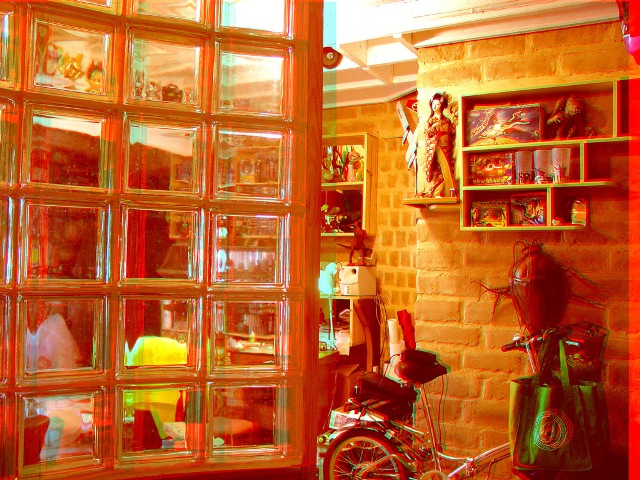 Lewis'
studio
You do
know, don’t you, that these tin toys that never were are
dangerously intriguing and collectible? Don’t you feel
guilty?
Of course not.
Of the two Black Lady Robots I’ve given to others, one
resulted in no effect and the other was crucified by the
Star Wars 3 Art department, an occurence that still rankles
deeply. If they didn’t want it, they could just have
returned it. It was an original,
not some K-Mart toy! Lewis'
studio
You do
know, don’t you, that these tin toys that never were are
dangerously intriguing and collectible? Don’t you feel
guilty?
Of course not.
Of the two Black Lady Robots I’ve given to others, one
resulted in no effect and the other was crucified by the
Star Wars 3 Art department, an occurence that still rankles
deeply. If they didn’t want it, they could just have
returned it. It was an original,
not some K-Mart toy!
This has only been a glimpse into
the warped world of Lewis P. Morley.
There's
another glimpse
HERE:
&
Read the komic
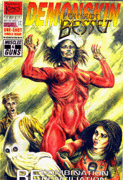 Peregrine Besset
(Leave comments,
too!)
Peregrine Besset
(Leave comments,
too!)
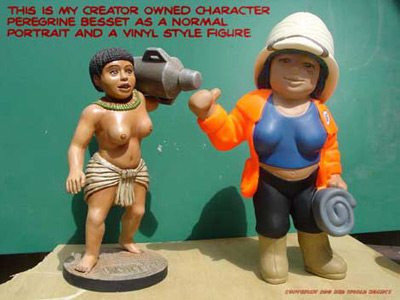 "It's your standard Ancient
Egyptian time-travelling dwarf gets thrown into the 22nd century, meets
Australian Space Diplomats and confronts God-like inter-
dimensional robots story" !
Visit
The Red World
"It's your standard Ancient
Egyptian time-travelling dwarf gets thrown into the 22nd century, meets
Australian Space Diplomats and confronts God-like inter-
dimensional robots story" !
Visit
The Red World
To have and to hold . . .
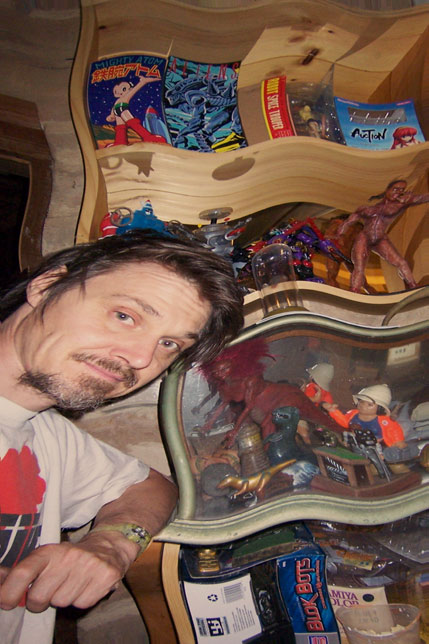 Everything Lewis P
Morley creates is so damnably cravable that I asked him
whether he would ever create for a collector.
He
said, "I can do commissions, but I would charge professional
rates, so they might appear quite expensive to most people’s expectations. Some
people complain that they don’t cost that much in K-Mart!"
Everything Lewis P
Morley creates is so damnably cravable that I asked him
whether he would ever create for a collector.
He
said, "I can do commissions, but I would charge professional
rates, so they might appear quite expensive to most people’s expectations. Some
people complain that they don’t cost that much in K-Mart!"
Obsessed?
Warped? Craving, say, a hyper-fetishized Black Lady Robot or
a whole show of never-were's, and K-Mart and the upmarket
galleries fail to satisfy?
Contact Lewis
P. Morley
redworldstories
@ aol.com
|
 Peregrine Besset
(Leave comments,
too!)
Peregrine Besset
(Leave comments,
too!)
 "It's your standard Ancient
Egyptian time-travelling dwarf gets thrown into the 22nd century, meets
Australian Space Diplomats and confronts God-like inter-
dimensional robots story" !
Visit
The Red World
"It's your standard Ancient
Egyptian time-travelling dwarf gets thrown into the 22nd century, meets
Australian Space Diplomats and confronts God-like inter-
dimensional robots story" !
Visit
The Red World
 Everything Lewis P
Morley creates is so damnably cravable that I asked him
whether he would ever create for a collector.
He
said, "I can do commissions, but I would charge professional
rates, so they might appear quite expensive to most people’s expectations. Some
people complain that they don’t cost that much in K-Mart!"
Everything Lewis P
Morley creates is so damnably cravable that I asked him
whether he would ever create for a collector.
He
said, "I can do commissions, but I would charge professional
rates, so they might appear quite expensive to most people’s expectations. Some
people complain that they don’t cost that much in K-Mart!"




 Lewis'
studio
Lewis'
studio